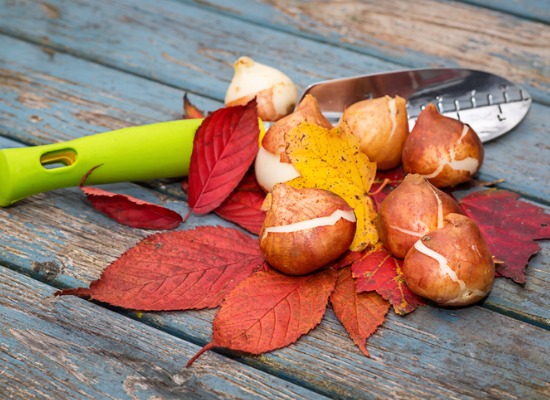TREE EDUCATION

Just because summer is over doesn't mean the planting season has come and gone. Extend your gardening season while taking advantage of fall's cooler weather to add new plants to your landscape. Fall's lower temperatures help ease the transition of many plants from pots to planting beds, and many pests and disease issues typically lessen. What's more, cooler air offers a welcome respite from the harsh, summer heat for planters. If you're wondering what to plant in the fall and why you should plant now, then SkyFrog Tree Service can help!
Our master arborists provide a fall planting guide to help you make the most of your fall garden. Additionally, we offer a comprehensive range of insured tree services designed to help you reap the benefits of your Florida landscape year-round. Contact us today to request a tree care estimate and to schedule tree care.
As the weather cools off after summer, the soil is still warm enough for proper root development, and prime tree planting season has arrived! Early fall is the ideal time to plant both trees and shrubs. Planting them in cooler air allows them to spend less energy producing new leaves, flowers, and fruit and instead focus on growing their roots deep into the soil. We recommend choosing Florida-native trees, such as hickory, blackgum, red maple, sassafras, Florida sugar maple, swamp chestnut oak, and flowering dogwood, that offer multi-season interest, including rich, fall colors. Before digging, be sure to check with your local utility company to locate any underground service lines. Plant trees and shrubs at their natural soil lines and keep new trees and shrubs well watered, especially until they take root. To ensure your trees and shrubs get the best care possible, contact us for new tree establishment from a board-certified master arborist, as well as tree pruning and tree restoration and preservation.
Florida native plants make great choices for planting throughout the year, as they are typically drought-tolerant and help cultivate the natural, local ecosystem by attracting native pollinators and birds. And when placed in the right conditions for each species, native plants in Florida require less irrigation and no fertilizers, which is beneficial to us and the environment. Among the most popular Florida native landscaping plants is the American beautyberry. This large shrub produces edible fall berries favored by birds and a bright, lavender color enjoyed by people. This plant thrives in partial shade to full sun and can easily be propagated with cuttings. Another native plant, the Chickasaw plum, is a small tree or large shrub that produces edible plums. Plant this during fall in full sun to partial shade and water until it is well established. After that, it will likely be drought-tolerant!
While we highly recommend enjoying the fruits of your planting efforts throughout the autumn season, we likewise advise doing some planting now for enjoyment later. Fall is the optimal time for planting bulbs that flower in either spring and summer, such as tulips, daffodils, jonquils, hyacinths, alliums, and other bright-colored, early spring-and-summer flowers. It's important to put these bulbs in the ground now because they need a significant amount of time to root and prepare for their vibrant displays come spring! Wait to plant bulls until nighttime temperatures drop to around 50 degrees or so for a minimum of two weeks to allow the soil a chance to cool down. Otherwise, your bulbs might emerge too early. Another option is to plant your bulbs in pots and allow them to prepare for their blooms in a holding bed or outdoor area with shelter, covered with multiple layers of mulch.
Throughout much of the year, Florida's climate is temperate and relatively unchanging. This climate makes the Florida growing season a year-round option for those who enjoy growing their vegetables. However, the fall season is optimal for planting lettuce, snow peas, collard green, carrots, brussels sprouts, spinach, broccoli, turnips, kohlrabi, and radish, among other cool-season vegetables. Keep fresh vegetables thriving by sowing seeds or transplants of cold-tolerant veggies. Depending on where you garden, you should put your seeds in the ground by early September, but you can plant seeds well after that in Florida. Whatever fall vegetables you choose to plant, be sure to read each plant's directions before planting anything to ensure you get the most out of your vegetable garden this season.
If a lawn is on your fall-planting plan, then this is the perfect time to get planting. Cool-season grasses thrive in the fall season, whether you intend to plant seed or sod. While it's common to plant grass year-round throughout the state, the best times to plant grass seeds are during the spring and fall seasons. Summertime heat can be too harsh on new grass, creating brown spots in your lawn, and fall timing allows grass seeds to absorb adequate water and nutrients before the arrival of colder weather. In terms of what type of grass to choose, there are many hearty grasses that grow well in Florida. For lawn grasses, consider varieties such as bahiagrass, pampas grass, St. Augustine grass, zoysiagrass, and multiple turfgrass varieties native to Florida. Planting native grass can likewise help facilitate easier lawn grass maintenance and promote a higher success rate when planting your lawn.